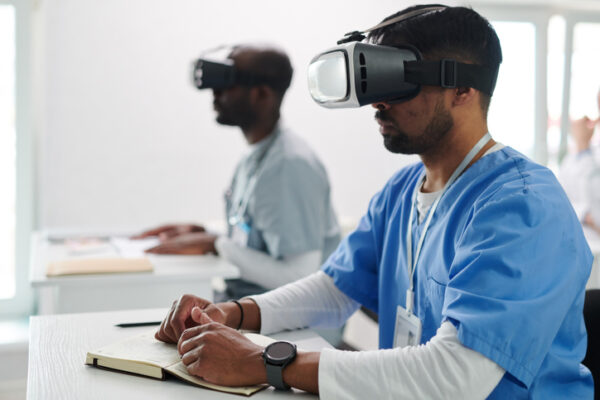
I’ve been a nurse for over 25 years. And throughout those 25 years, I’ve had to quickly adapt to new situations as I cared for patients everywhere from the emergency room to the battlefield in Iraq.
Now, as an educator teaching North Carolina’s next generation of nurses, fellow faculty and I are adapting to embrace technology as a force multiplier in the classroom. As we see advancements like artificial intelligence enter the conversation, it’s important America’s colleges learn how to maximize these tools to boost the capacity of nursing programs rather than shy away from them.
It’s no secret that the U.S. is in the midst of a serious nurse shortage. Estimates show we need to double the number of new graduates entering the workforce every year for three years straight just to make up for the gaps in our workforce. But as long as nursing schools have to turn away qualified applicants because they are at capacity, it will remain impossible to achieve this goal. About 60% of nursing schools across the country reported vacant full-time nurse faculty positions, and with many educators retiring, it’s clear we need tools to help support the already under-resourced faculty working hard to prepare their students.
This is where new technology comes in.
Nursing schools should consider a scalable, comprehensive approach to integrating technology in nursing education. First, consider going textbook-free, which ensures that students have the most up-to-date information that reflects fast-evolving research in medicine. Additionally, tools like virtual simulation and guided case studies should be utilized to help scale up productivity and admit additional cohorts of students. This helps students gain hands-on training and improve their clinical judgment without any risks to patients, allowing them a safe space where they can make the mistakes necessary to learn.
Cutting-edge AI developments are now being implemented as nursing education tools, such as helping educators like me save time by developing assessment questions for our students. One of the common reasons nursing faculty leave academia is a lack of resources. These varied AI tools are mind-blowing and can directly address the concerns of faculty, saving instructors significant time and energy, reducing burnout, and even allowing for larger class sizes. Moreover, we can harness them to develop the students’ ability to think critically – and developing clinical judgment is at the very heart of what today’s nurses must possess. Instead of worrying about students surreptitiously using tools like ChatGPT to cheat, educators should create projects that incorporate AI models. At our school, for example, we asked students to use ChatGPT to research sepsis then compare what they found to the information in their lessons and medical journals. Many were surprised by some misleading and unnuanced information that AI provided, helping them not only master the knowledge needed to be a good nurse but, just as importantly, understand the potential limitations of these important tools that are quickly becoming ubiquitous.
Leveraging technology as a force multiplier can significantly help other nursing programs across the country graduate more practice-ready nurses to care for patients in their communities.
At a time when the demand for care is rapidly rising, acuity for inpatients is at an all-time high, and the US is struggling with a nursing workforce crisis, policymakers must look at the root of the problem: the shortage of qualified faculty who can educate nursing students. Without the faculty to teach them, we cannot build a strong, sustainable pipeline of new nurses entering the workforce. As schools work to hire new educators to fill gaps, it will be even more important than ever to have a plan for using cutting-edge tools to boost schools’ capacity to develop nurses to meet the complex challenges of the country’s healthcare systems.
I’ve seen first-hand the positive impact that technology in the classroom can have on admitting and training more nursing students. By innovatively disrupting how we approach nursing education and giving faculty the tools they need to be more efficient, we may have a promising solution to the worst nursing shortage in history.
Photo: shironosov, Getty Images
David Everhart, RN, MSN, CEN is the LPN-RN Lead Instructor at Caldwell Community College and Technical Institute Nursing Program Faculty in Hudson, NC. He served in the U.S. Navy Nurse Corps from 1998 to 2011, including a deployment to Iraq in 2003, and retired as a Lieutenant Commander. Afterward, he held nursing leadership positions at Atrium Health Blue Ridge before joining Caldwell Community College and Technical Institute Nursing Program Faculty in 2021.
This post appears through the MedCity Influencers program. Anyone can publish their perspective on business and innovation in healthcare on MedCity News through MedCity Influencers. Click here to find out how.











